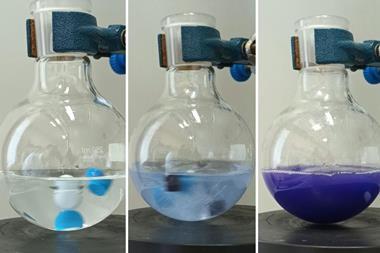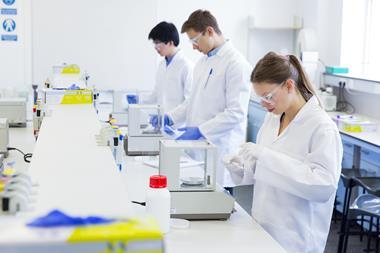Practical teaching strikes a balance between removing hazards and learning to respect them
Over the years, there have been all sorts of initiatives (in several different countries) to reform or modernise the ways in which chemistry is taught. Then the pandemic hit the experimental science courses particularly hard, naturally, since it really is impossible to do laboratory work remotely. I’ve advocated (in this column and elsewhere) the view that hands-on experience with lab work is an essentially part of chemistry and biology training, and I’ve been very glad to see its return (see Chemistry World, October 2022, p19).

But there’s another issue in chemistry teaching that has never gone away, because it has never really been resolved: how dangerous does it have to be? There are injuries and even deaths in graduate chemistry work, but at least there one has the fallback explanation that some of this is research involving reactions that have not been run before and substances that have never been investigated. Truth be told, however, too many of these incidents involve less-experienced graduate students handling reagents whose hazards have long been recognised. The tragic death in 2009 of Sheri Sangji at the University of California, Los Angeles (UCLA) came down to improper handling of tert-butyllithium, a reagent whose unstoppable spontaneous flammability is well known to every experienced synthetic organic chemist. That leaves very few excuses for careless supervision when someone who is only in their third month in the lab is handling it. Sangji was not wearing a lab coat, and there was no one who said otherwise.
Undergraduates are the very definition of inexperienced workers in a lab setting, and their unpredictability has to be taken into account
There is even less room for excuse-making in undergraduate courses. The lab work in these consists of well-known reactions chosen for illustrating key features of organic chemistry in parallel with the classroom material, and the details are almost invariably well worked out. But undergraduates are the very definition of inexperienced workers in a lab setting, and their unpredictability has to be taken into account when designing teaching experiments. I well recall my days as a graduate teaching assistant, when I saw mistakes made that I had completely failed to anticipate, mostly through lack of a vigorous enough imagination on my part.
That experience naturally led me to recall my own first experiences as an organic chemistry undergraduate. My professor back then well realised the strange variations that could be rung in the teaching labs. He once said that he wanted to hire a team of summer students to run the course’s experiments while making every possible mistake, aiming to assemble what he called a ‘Book of Tolerances’. That way, he said, ‘when someone comes up to me during the lab section saying that they added cheese sauce to the reaction instead of hydrochloric acid and is wondering if that will make a difference, I can flip to perhaps page 575 of the Book and say “No, no, turns out that’s OK’.”
But at the same time, particularly in the second half of the course, we handled some reagents that could have caused real trouble. Chlorosulfonic acid immediately comes to mind, encountered as we followed the classic preparation of the early antibiotic sulfanilamide. This is a rather nasty substance, corrosive enough to make concentrated hydrochloric acid seem of no great concern, and if spilled would go through a pair of trousers like a scimitar. No one was injured during our work with it, just as (similarly) no one was injured a few years later when I was supervising a lab full of undergraduates using fuming nitric acid to oxidise glucose. I can say that I tried strenuously to impress on them the hazardous nature of the stuff (my demonstration was to stick my yellow-gloved finger down into the acid vapors while delivering my lab lecture, removing it to demonstrate that the yellow rubber had turned jet black).
I couldn’t help but wonder, though, if that week’s lab was completely necessary, and if my earlier chlorosulfonic one had been as well. I’m still unsure. These hazards definitely could have been avoided; there are any number of replacement experiments available then and now. But there was probably some benefit for both sets of students to get a look at one of the tigers, to know them for tigers, and to realise that their safety was ultimately in their own hands. That it was care, forethought, and good sense that would have the best chance of keeping these beasts in their cages. It always is. And while I’m not sure how many other ways there are to teach that, I’m also haunted by the thought of what happens when it isn’t taught at all.

















No comments yet